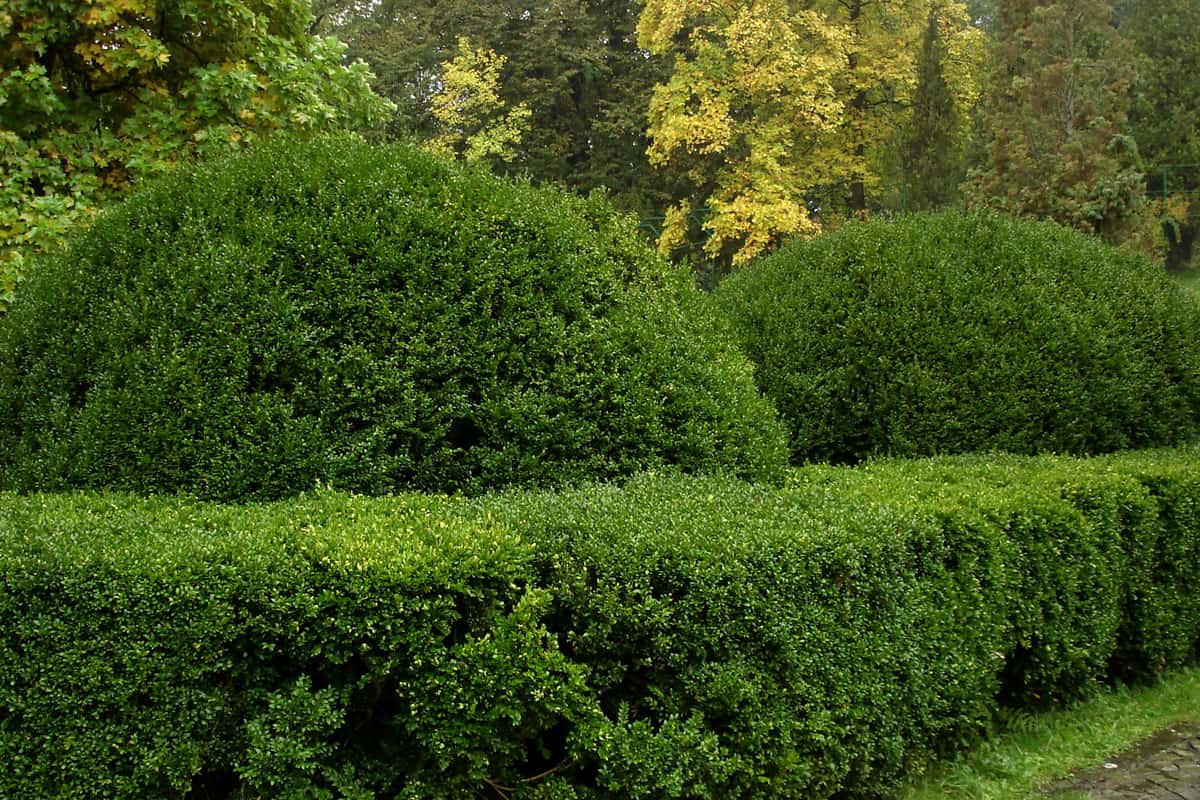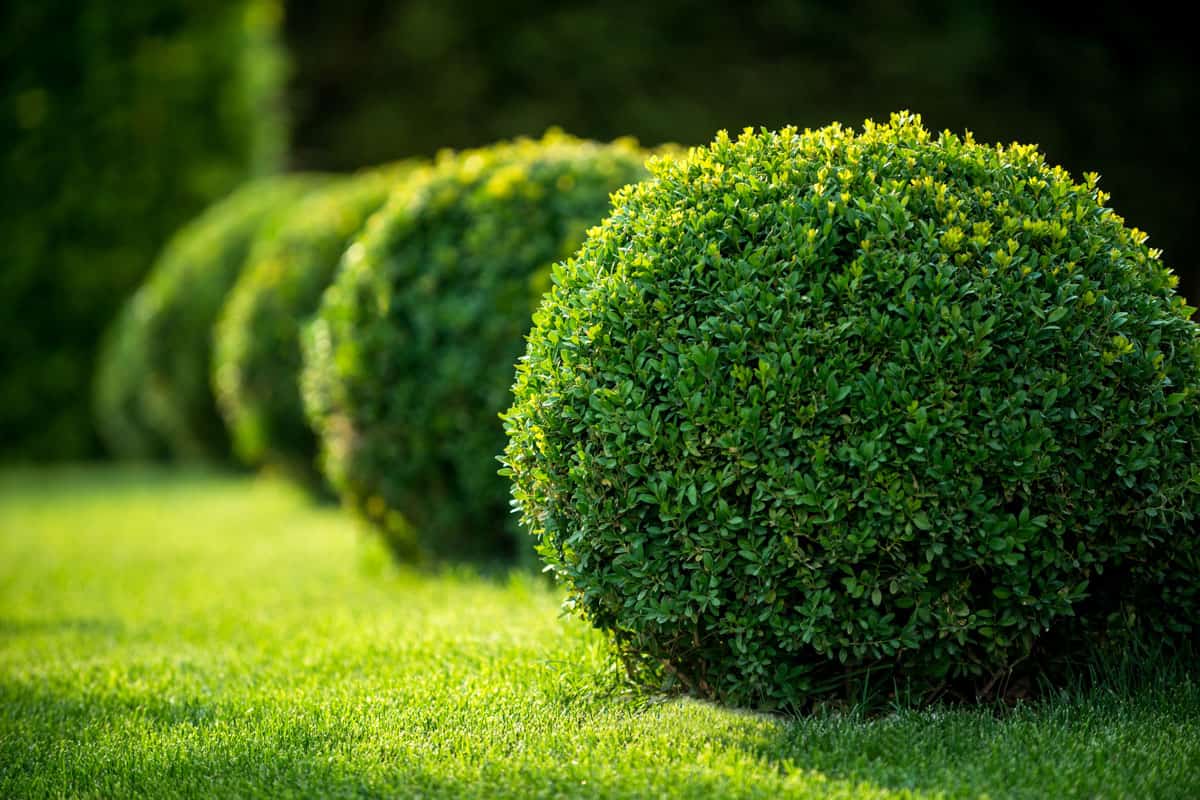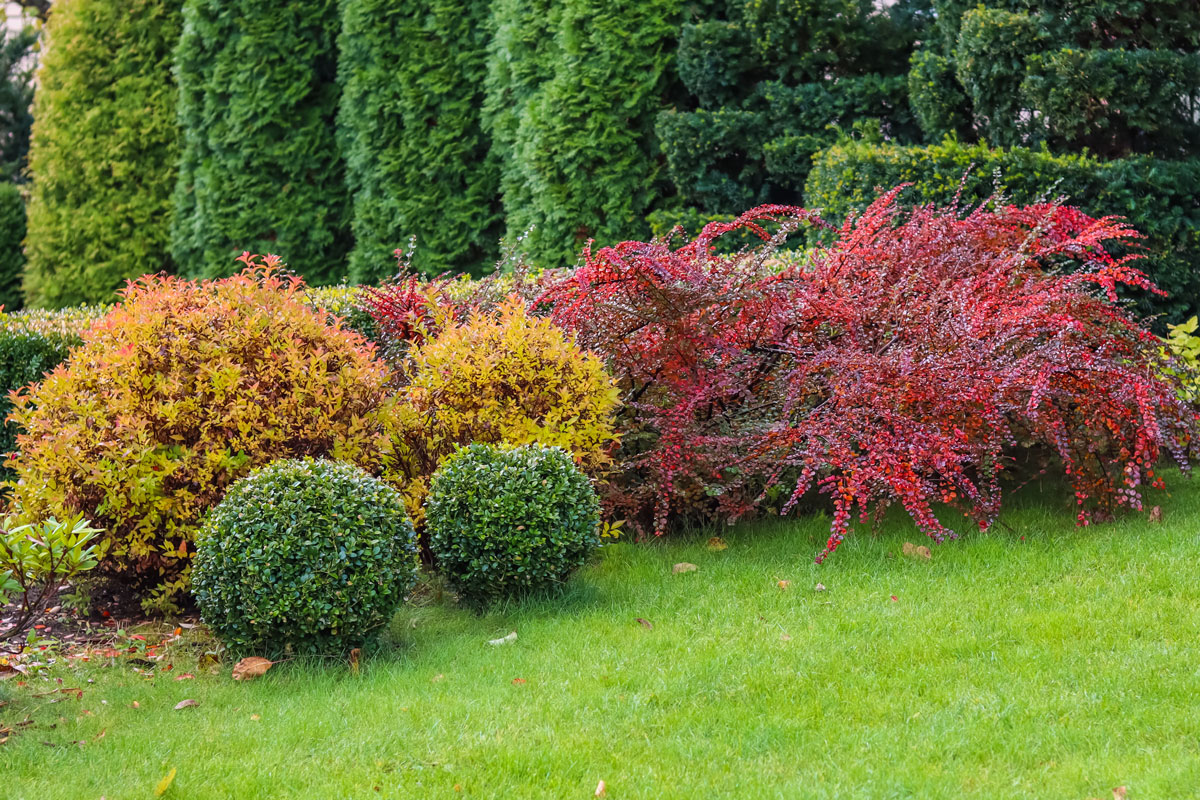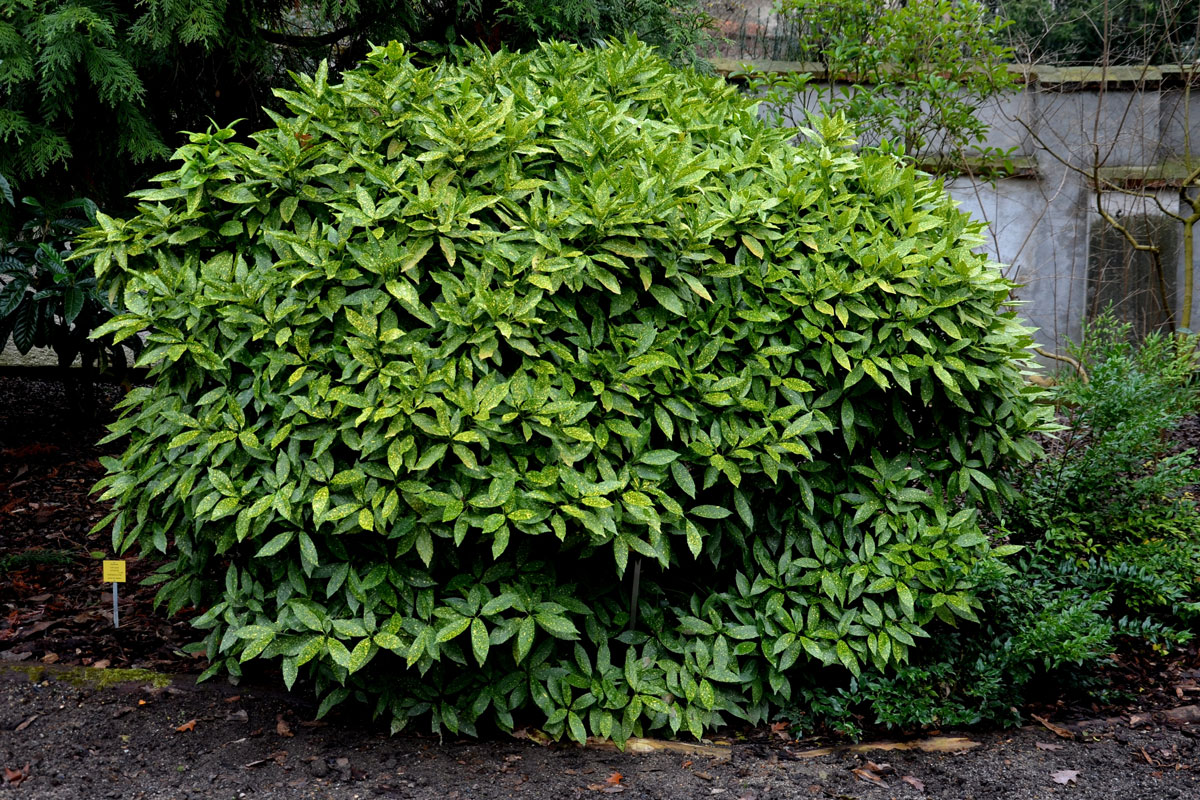Evergreen bushes are good for any garden as they are visually appealing and can serve as a privacy screen in your yard. However, if they die or lose their visual appeal, removing them will become necessary. If you are looking for ways to easily get rid of evergreen bushes, we've got you covered. We have researched ways you can do this quickly and efficiently.
If you have decided that you want to remove your evergreen bushes, you should cut each bush at the base of the trunk with a handsaw or chainsaw. You may also need to dig up the stump to the roots if you intend to replace the bushes. If you are moving a bush, trim the branches and dig it up to be placed in another location.
This post will discuss how to properly remove evergreen bushes in detail. We will also tackle the right tools for the job and what to do after you've removed them. Continue reading to learn more about this topic.
Why Remove Evergreen Bushes?
Evergreen bushes are a staple in many gardens. There are several types that you can choose from to make your garden more appealing. However, there are times when the bushes become unattractive.
The bushes may overgrow as time passes and can get in your way. Large bushes planted near walls will have to be removed as they can affect your house's structural integrity.
Your evergreens may also contract diseases and die, so removing them is necessary to prevent the spread of disease.
You might want to redesign your garden, which involves removing and relocating the shrubs. This is especially true when you've just moved into a new place. Although the evergreen bushes are already there, you don't have to live with them if you don't want to.
Whatever the reason, getting rid of evergreen bushes is not rocket science. The process is quick and easy if you have the right tools for the job.

How To Remove Evergreen Bushes
Getting rid of evergreen bushes involves a few steps.
![Generic green fresh round spheric boxwood bushes wall with warm summer sunset light ,evergreen bush, How To Remove Evergreen Bushes [Quickly & Easily]](https://gardentabs.com/wp-content/uploads/2022/12/How-To-Remove-Evergreen-Bushes-Quickly-amp-Easily-1.png)
Plan Ahead
Before you remove the bushes, plan what you will do with the space. Drawing what you want the garden to look like will help you in planning. You'll also need to plan what plants to buy to cover the space.
Looking out for utility lines is also part of the planning. If there are lines that will be affected if you dig up the roots, it is better to call a professional to do the job to avoid any accidents. You may also need to call 811 before you do any digging.
Get The Right Tools And Start Cutting
The next step is to prepare your tools. The cutting tools you need will depend on how big the bush is.
You will need a pair of gloves and eye protection. Do not work without them. You should also wear sturdy boots to protect your feet from sharp tools.
Click here to see these protective gloves on Amazon.
Tree trimmers are needed if the evergreen bushes have grown and you cannot see through the branches and leaves. Trim the branches first so you can easily see where to cut. You can also use this tool to cut visible roots.
Click here to see this trimmer on Amazon.
After you have trimmed the bush, cut it using a handsaw. Take note that bigger, older bushes may require a chainsaw. Cut the bush down to the stump. Note that evergreen bushes don't grow back when only the stump is left.
Click here to see this mini chainsaw on Amazon.
Cut The Roots
You should be able to dig around the stump to sever the roots. However, this can be laborious, so you can grab a reciprocating saw and cut the roots. A pointed shovel can also get the job done if you don't have this saw. Cut all the roots you see so you can easily remove the stump later.
Click here to see this reciprocating saw on Amazon.
Get Rid Of The Stump
Although bushes won't grow back once they're cut down to the stump, it would be wise to get rid of the stumps, especially if you want to use the space to plant something else.
Use a spade to dig up the soil around the stump. Rock the stump back and forth to loosen it up until it comes out of the ground. You may need another person to pull the stump while you cut the roots.
You can leave the stump to decompose. However, it can attract insects or even termites, so it will be better to dig it up.
Cover The Hole
Clean out the area where you removed the evergreen bush. Once everything is clear, shovel the soil back into the gap, and you're ready to reuse the space.
Moving A Bush
If you want to relocate a bush, skip the cutting part. You should only trim the overgrown branches enough to see the evergreen bush's base. Do not chop all the leaves off because you'll lose the leaf surface.
Use a spade to dig up the bush. Removal may result in a large hole, so you should have enough soil to cover the gap.
Remember that early spring and fall are the best seasons for transplanting evergreens.
What Are The Advantages And Disadvantages Of Evergreen Bushes?

We mentioned earlier that evergreens can provide privacy and serve as a fence around your home. Apart from that, these plants are almost maintenance-free; you only have to prune them regularly.
Another advantage of planting them in your garden is that birds and other insects that help pollinate your flowers will have a haven.
Some evergreens also produce beautiful flowers and berries, which can benefit you long-term.
The downside of having evergreen bushes is that they grow fast and can get out of control. If you don't prune them regularly, they'll quickly lose their visual appeal.
Some varieties may be planted near the foundation of your house. This could be problematic in the long run because the roots of the plants can affect structural integrity.
Moreover, the older the bush is, the harder it is to remove.
What To Do After Removing Evergreen Bushes

You have removed your dead bushes. Now what? You may violate some laws if you don't dispose of these properly. It is good to know that these can be recycled and not just discarded anywhere.
Some garbage collectors accept branches and trimmings, so check out the collectors in your area if they do.
Another method of disposal is adding the clippings to your compost file. Cut the clippings into smaller pieces, so they decompose faster.
Keep in mind that diseased bushes should not be recycled. They can infect other plants, so they should not be added to the compost pile.
Can You Pull Out Evergreen Bushes With A Truck?

Some may argue that pulling up evergreen bushes with a pickup truck is the easiest way of removing them.
This may be true because you can tie a towing chain to the bush and attach the towing chain to the truck's towing hitch. Driving the truck forward should pull out the bush.
So, yes, you can use this method. However, it may be risky. There is a chance of the chain snapping, which can cause accidents. Splinters may also fly and cause injury.
Additionally, this method is easily executed if you remove only one bush. You'll need to repeat the process several times if you're removing a number of bushes.
This process may also damage plants near the bush that's being removed. You need space to maneuver the pickup; if your lawn is not big enough, this may not work.
You won't be able to use this method if you don't own a truck, and renting a truck may be more expensive than buying cutting tools.
Final Thoughts

Evergreen bushes can give life to a lawn. However, there are times when you need to remove them because they've died or you're remodeling your garden and want to relocate them. Whatever the reason is, cutting the bushes with a handsaw or chainsaw is the easiest way to get rid of them.
You can try pulling the bushes out with the help of a pickup truck. However, this method may have more drawbacks than benefits.
Throughout this post, we discussed the details of removing evergreen bushes along with other important things you need to know.
If you found this post helpful, feel free to check out these other posts:




